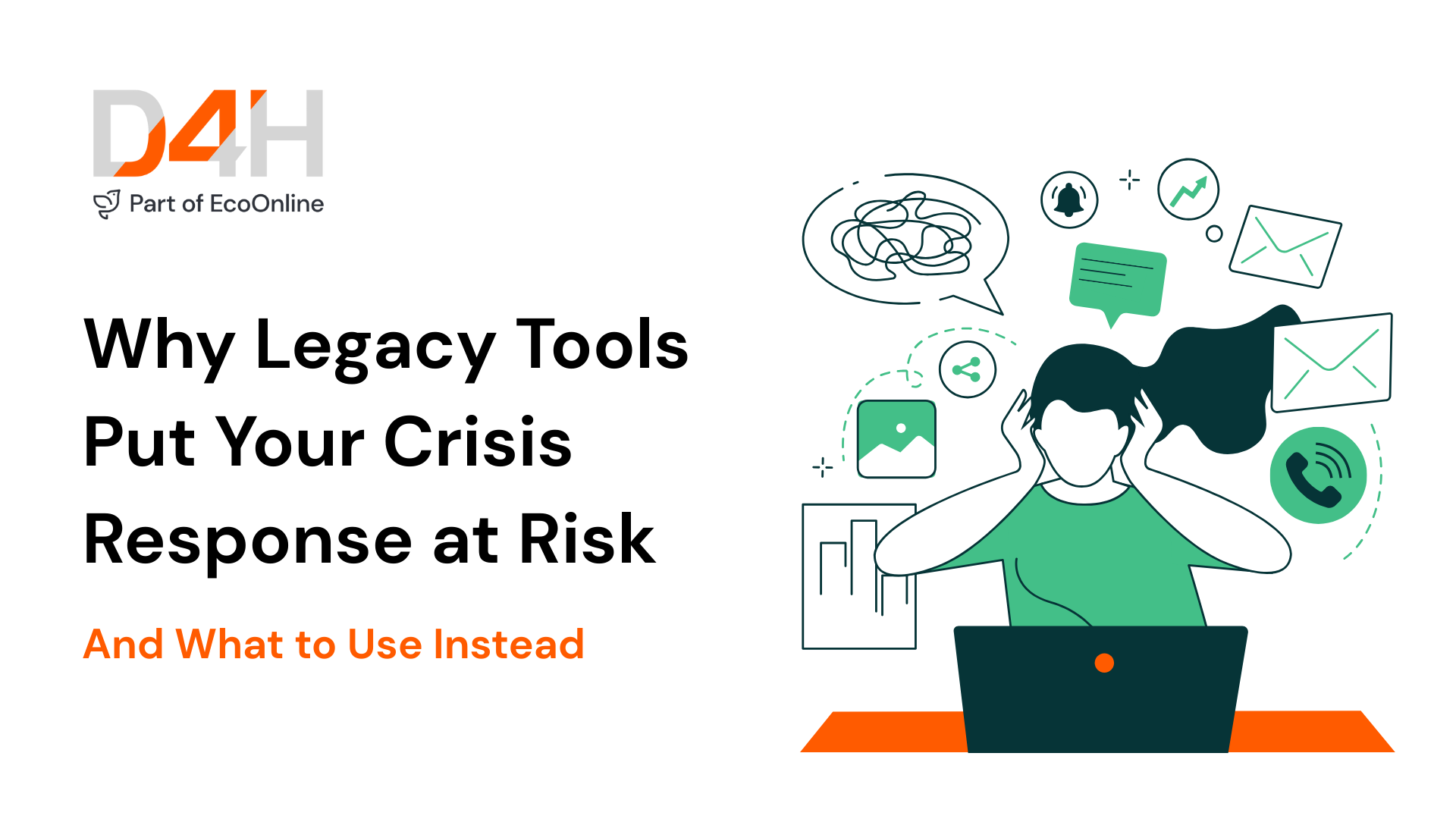
Why Spreadsheets and Phone Trees Will Fail You in a Crisis
Organizations today face a growing number of crises, both in frequency and complexity. Climate change is fuelling more extreme weather events. Global supply chains mean local disruptions can ripple worldwide. Increasing digitization brings with it escalating cyber threats. Social media amplifies public perception instantly, turning even small missteps into full-blown crises.
When crises strike, the last thing your business should be relying on is outdated tools. Yet across industries, many organizations still default to spreadsheets and phone trees to manage their emergency response.
What might feel familiar and “good enough” is actually costing you time, clarity, and control, three things you can’t afford to lose in a crisis.
The Hidden Costs of Legacy Tools
Spreadsheets and phone trees were designed for routine operations, not high-pressure emergencies. In stable environments, they can get the job done. However, crises are chaotic, fast-moving, and high-stakes. They demand seamless coordination and real-time clarity. Without that, response efforts slow down, communication breaks down, and mistakes multiply, leading to higher recovery costs, compliance risks, and reputational damage.
Delays That Snowball Into Disaster
In a crisis, every minute matters. Spreadsheets require manual updates, offer zero real-time visibility, and quickly become obsolete in a dynamic situation. Similarly, phone trees depend on sequential communication; if one person doesn’t answer, the entire chain can break.
The result? Critical delays, fragmented information, and teams left waiting for direction.
By contrast, modern crisis and emergency management software provides real-time status boards, instant alerts, and live situational awareness, helping your teams mobilize faster and make smarter decisions.
No Visibility, No Accountability
Spreadsheets don’t track who made updates or when. Phone trees don’t show who received the message or who’s acting on it. In the chaos of an incident, that lack of visibility means you can’t be sure what’s happening, or what’s not.
With centralized software, you gain a clear operational picture. Task assignments, resource movements, and communications are all tracked and time-stamped, so you know who’s doing what, when, and why.
Compliance and Documentation Gaps
Regulatory requirements don’t go away during a crisis. In fact, they’re more important. Manual tools make it nearly impossible to capture a reliable audit trail in real-time.
Using purpose-built crisis management software, all actions, communications, and decisions are logged automatically. Whether you need to generate an after-action report, respond to an audit, or defend your decisions, everything you need is already there.
Fragmented Communication Causes Confusion
Phone trees were built for one-way messaging. They weren’t designed to handle two-way updates, real-time collaboration, or multiple teams across locations. As a result, miscommunication is common and dangerous.
Emergency and crisis management software replaces scattered calls and texts with structured communication tools that connect the right people with the right information instantly. No guesswork. No crossed wires.
You’re Building Response Plans on a Shaky Foundation
Every crisis reveals gaps in readiness: missing contact information, unclear roles, outdated plans. Spreadsheets and phone trees hide those weaknesses until it’s too late.
Modern platforms encourage proactive planning, digital contact lists, scenario-based exercises, and continuous improvement, so you’re not scrambling to fix problems in the middle of a response.
It’s Time to Modernize Your Response
If your crisis responses still rely on day-to-day communication and collaboration tools, you’re not just behind, you’re at risk. The tools that got you here won’t get you through the next big incident.
Upgrading to purpose-built crisis management software like D4H isn’t just about convenience. It’s about readiness, resilience, and real-world performance when it matters most.
Final Thoughts
Stop Managing Emergencies with Outdated Tools
Spreadsheets and phone trees may seem low-cost, but their hidden risks and inefficiencies can cost you far more in the long run, missed alerts, slow responses, compliance gaps, and reputational damage.
A modern emergency demands modern tools.
Ready to replace your spreadsheets with smart, scalable response software? Talk to us at D4H, now part of EcoOnline.
Watch on YouTube
Highlighted Features
Recommended Software
Recommended Products
All content provided on this blog is for informational purposes only. D4H makes no representations as to accuracy, completeness, currentness, suitability, or validity of any information on this site and will not be liable for any errors, omissions, or delays in this information or any losses, injuries, or damages arising from its display or use.








.png)